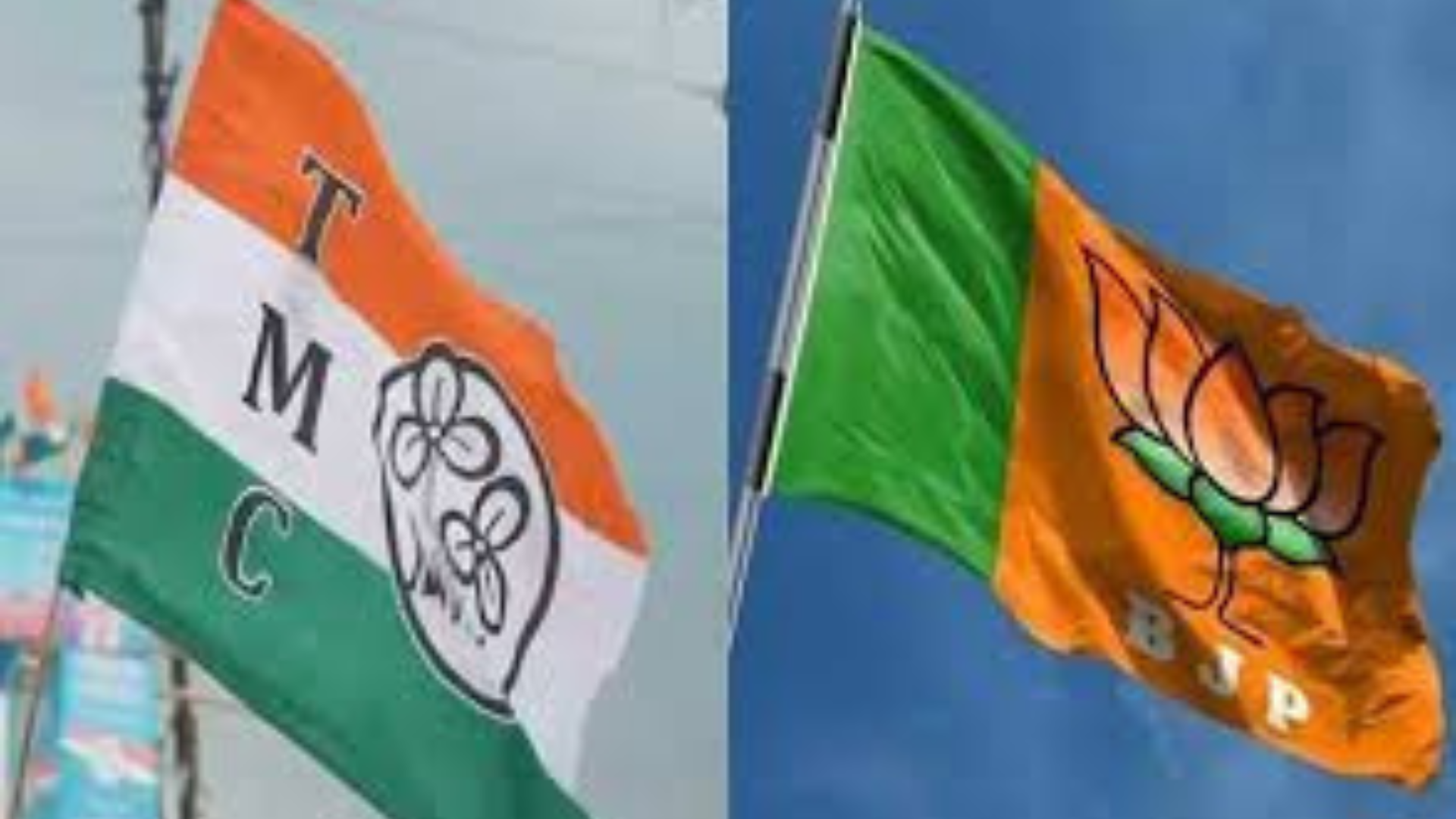Kolkata: “Eta khub kothin” (It is very difficult), said a senior district-level
With the Assembly elections in West Bengal scheduled for May 2026, still one and a half years away, the opposition BJP appears unlikely to replace the ruling TMC unless a significant course correction is undertaken soon by Prime Minister Narendra Modi, Home Minister Amit Shah, and the incoming party president.
The ruling TMC continues to hold a dominant position, even as there is a desire among a substantial section of voters, excluding the TMC’s vote bank, to bring the BJP to power. Among TMC’s loyal vote bank are approximately 30% of the state’s Muslim voters. To form a government, the BJP would need to secure 34-40% of the remaining 70% votes. However, this remains a steep and perhaps impossible climb, given the growing perception of a strategic tie-up between the TMC and BJP. This perception is not just limited to voters but has also taken root among the BJP’s dedicated cadre, who led from the front until May 2021.
Over five days, The Sunday Guardian spoke to several district-level BJP leaders and functionaries whose voices are often overlooked by the top Kolkata-based leadership, let alone those in New Delhi. These leaders expressed that the BJP was best positioned to come to power during the 2021 elections but now believe the strong voter sentiment and cadre enthusiasm of that time have dissipated.
These district presidents and members of BJP’s frontal organizations, including the Bharatiya Janata Yuva Morcha, stated that the central leadership’s lack of action during crucial moments had strengthened the perception of a strategic tie-up with the TMC. According to them, the BJP had an opportunity to challenge the TMC after the Kolkata RG Kar rape case earlier this year, as it had generated tremendous public anger against the ruling party and a section of its leaders. However, the BJP leadership, for reasons known only to them, failed to act decisively.
BJP leaders highlighted an incident during a social event where the parents of the girl who was raped and killed had sent requests to meet central BJP leaders present in the state. Despite local BJP leaders advocating for this meeting, it never materialized. This, understandably, disillusioned both the cadre and the public.
Another growing concern is the BJP’s inaction against TMC MP Abhishek Banerjee. Over the last three to four years, Banerjee has built a strong constituency of voters and workers and is now poised to lead the TMC when the time comes. He is easily the most popular face of the TMC, a fact even BJP leaders acknowledge.
However, his emergence has reinforced the narrative that while the BJP speaks loudly against the TMC, it remains silent when action is required. Banerjee, who is accused in multiple alleged scams, has yet to face imprisonment, raising questions among voters and BJP leaders. This lack of action has led to the assumption that the BJP and TMC, at some level, are colluding.
Voters told The Sunday Guardian they believe there is a tie-up between the two parties. Consequently, rather than disrupt the balance by voting for the BJP, which they perceive as not serious about coming to power, they have either voted for the TMC or abstained from voting altogether.
This sentiment was reflected in the recent Lok Sabha polls, where the BJP’s seat count in Bengal dropped significantly from 18 in 2019 to 12 this time. Party leaders predict that unless the central BJP takes steps to dispel this perception, the BJP will likely be limited to around 30 seats in the 2026 Assembly elections—a sharp decline from the 77 seats it won in 2021.
Leaders also admitted that even in Assembly constituencies represented by sitting
BJP MPs, the party is expected to perform poorly, as many MPs have avoided any actions that might disturb the status quo with TMC leaders.
Multiple leaders confirmed that the response to the party’s recent membership drive was abysmal.
They also cited one of the primary reasons for the exodus of TMC leaders who had joined the BJP after the last Assembly elections. Many of these leaders returned to the TMC, believing that the BJP’s central leadership was not genuinely interested in unseating the TMC.
This exodus is expected to become more prominent after the 2026 polls if the BJP fails to secure power. A loss would leave the party’s cadre and ground-level leaders questioning their survival. According to party leaders, nearly 230 BJP workers have been killed in political violence over the past four years, and the number of individuals willing to join the BJP is steadily decreasing.
According to these ground-level leaders, party review meetings, which are often conducted virtually, tend to be dominated by one-sided
communication from the “top” leaders. These leaders primarily share their views and dispense “Gyan” rather than actively seeking feedback on ground realities or understanding why the BJP is losing ground so rapidly.
“Once you really make up your mind that we want to remove the TMC government and send that message to us and voters through actions and not words, then only things will change. As of now, we are fighting a losing war,” a BJP leader told The Sunday Guardian when asked what message he had for the central leadership.
Narrative gets stronger of BJP-TMC ‘tie-up’ in Bengal
इस शब्द का अर्थ जानिये
- Advertisement -

